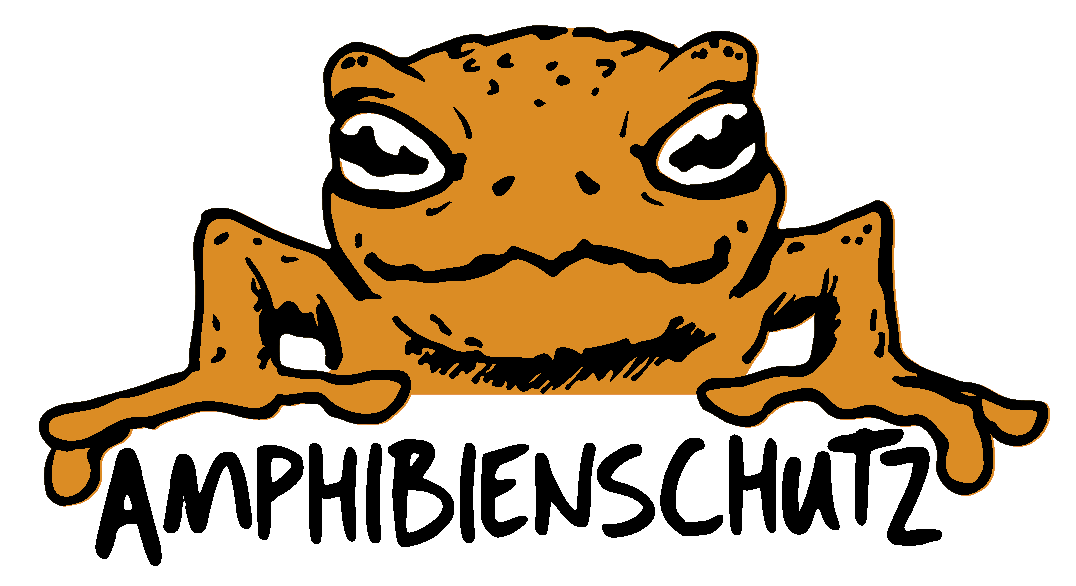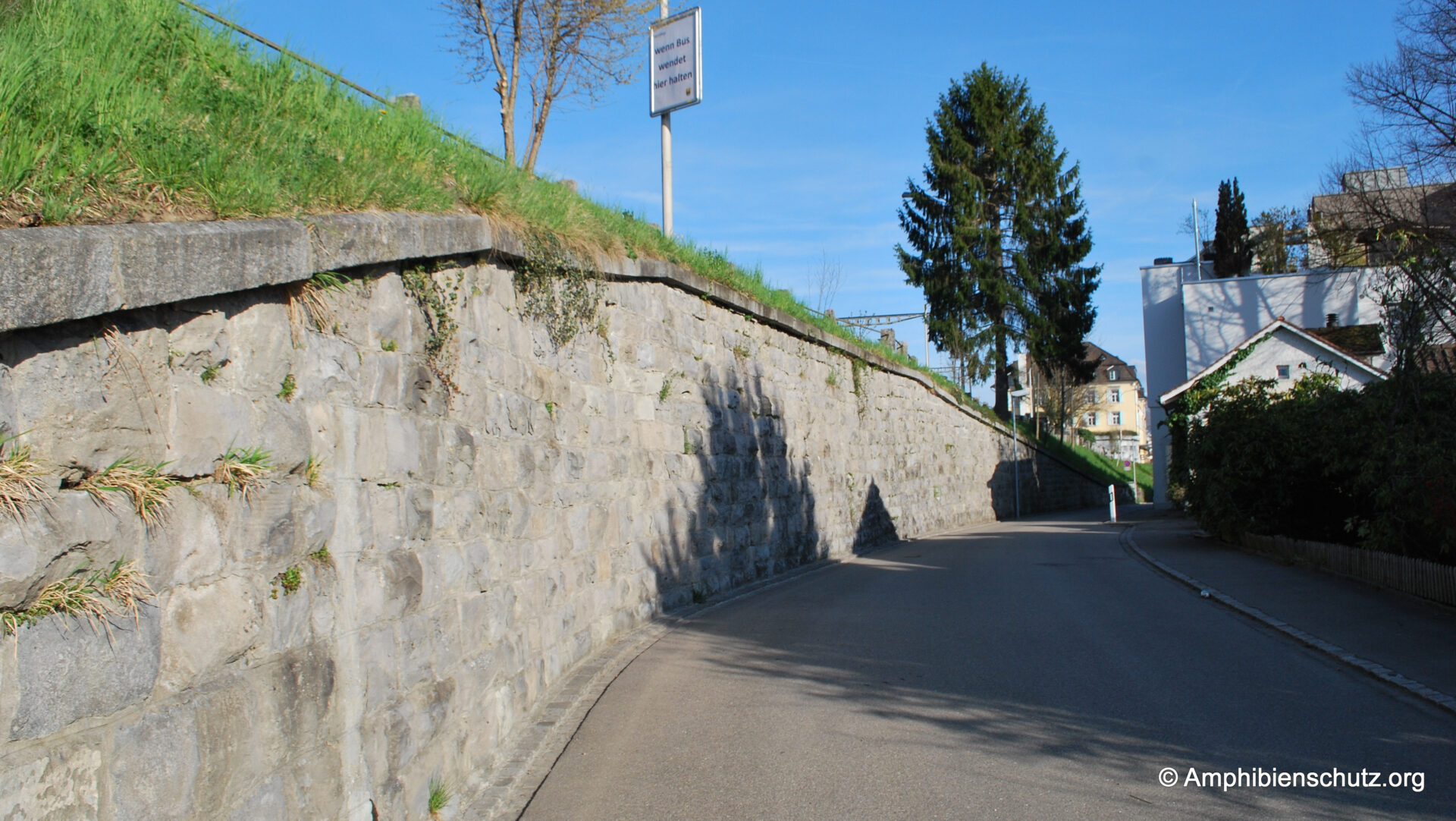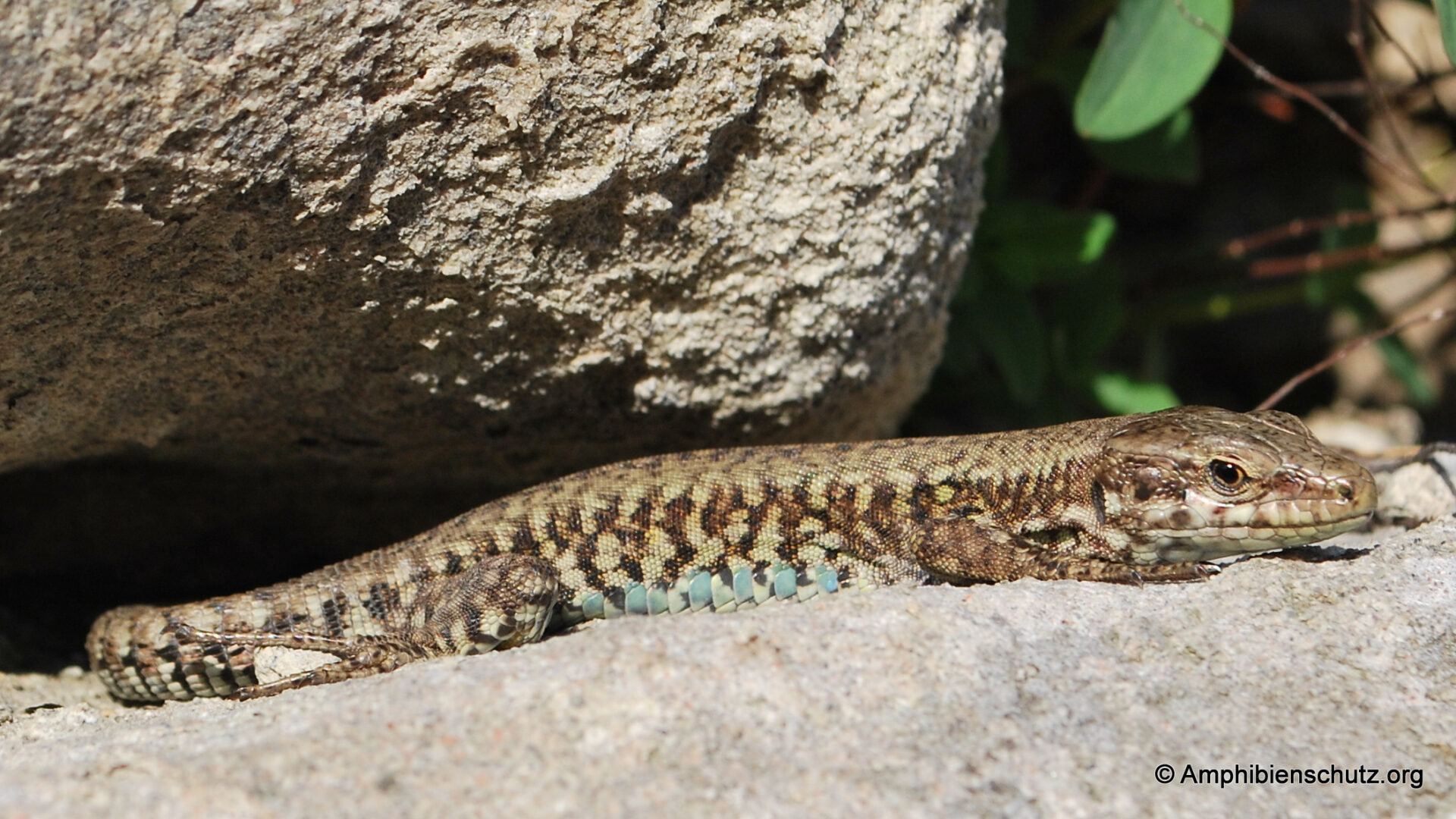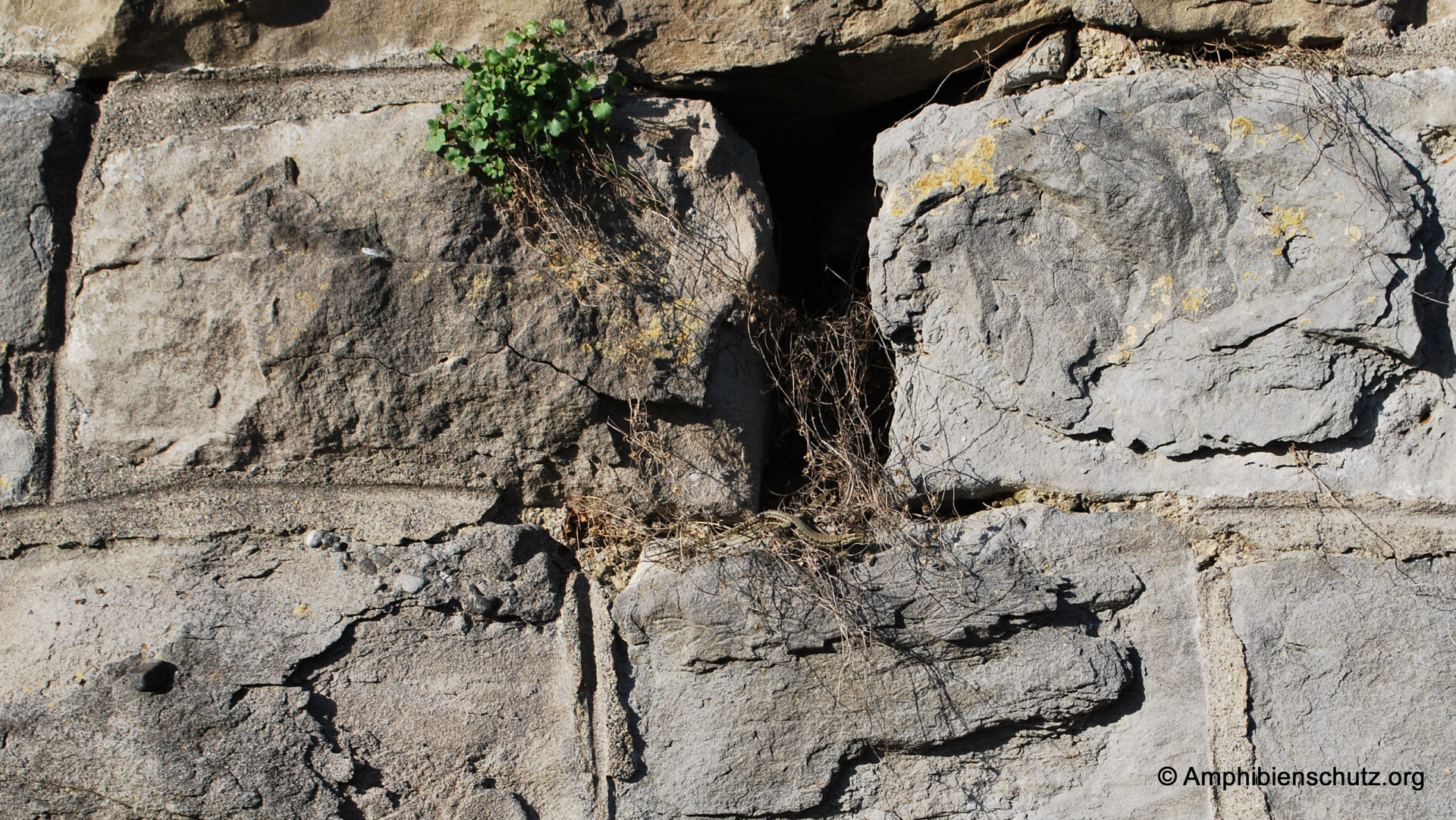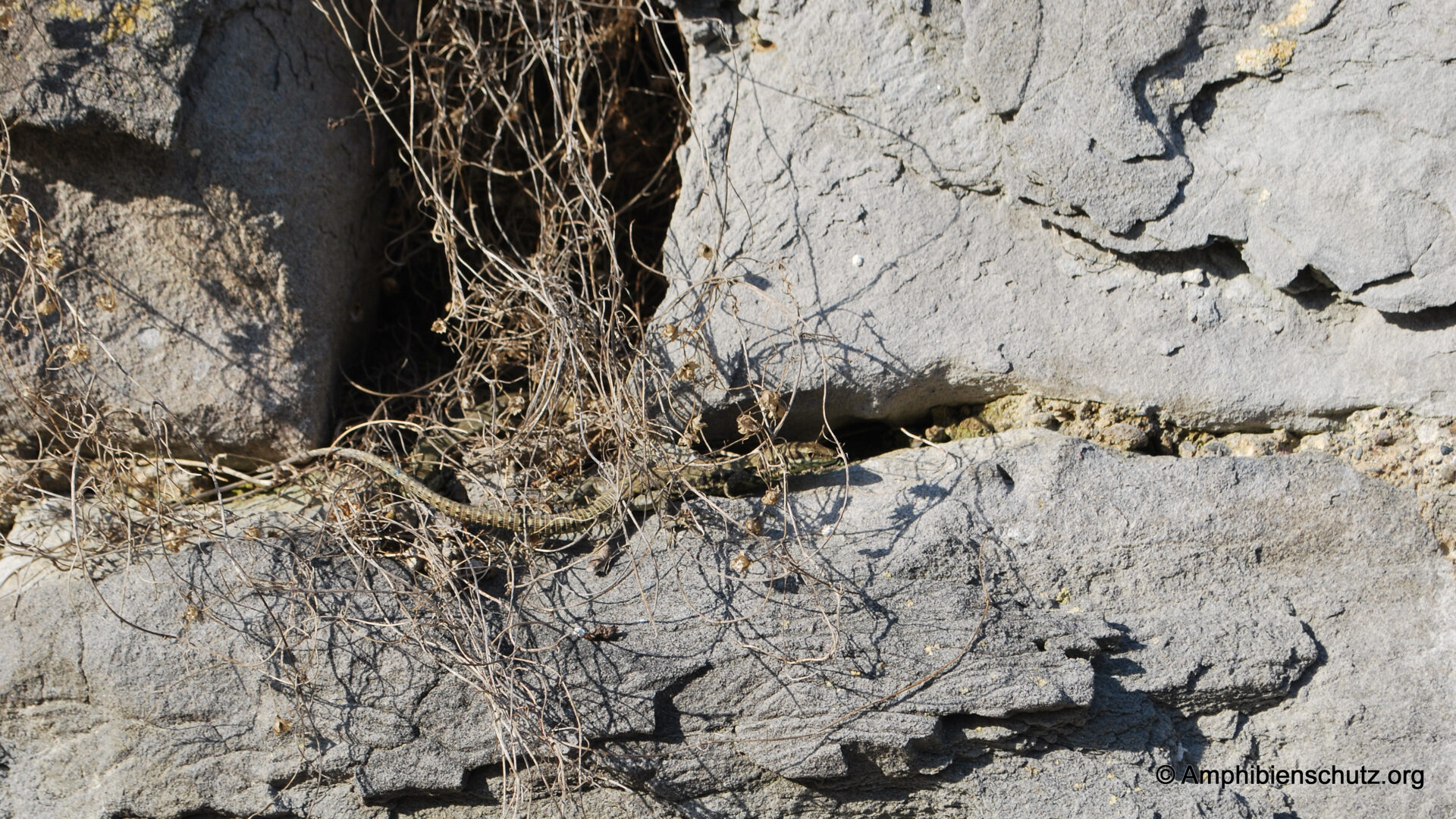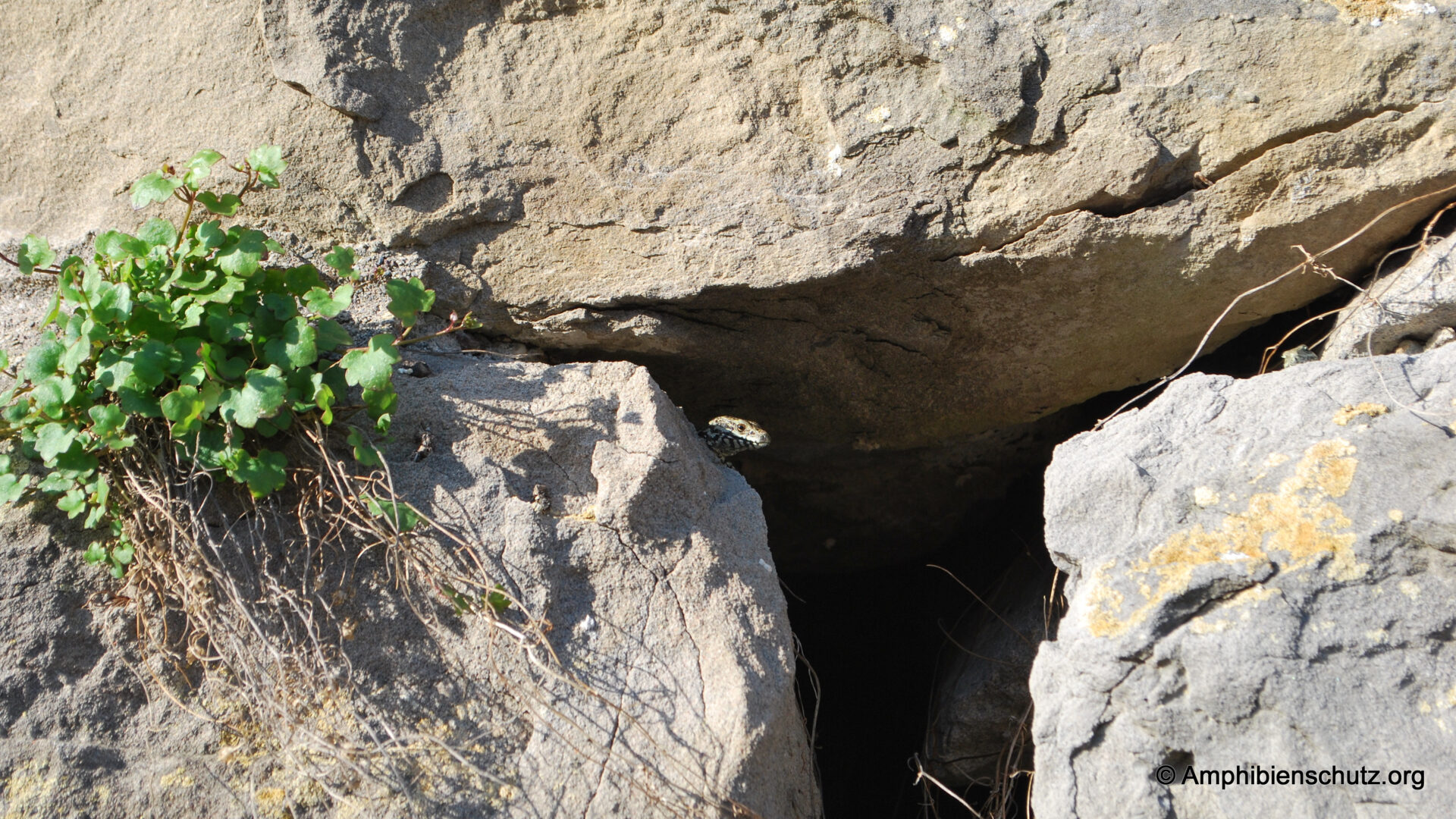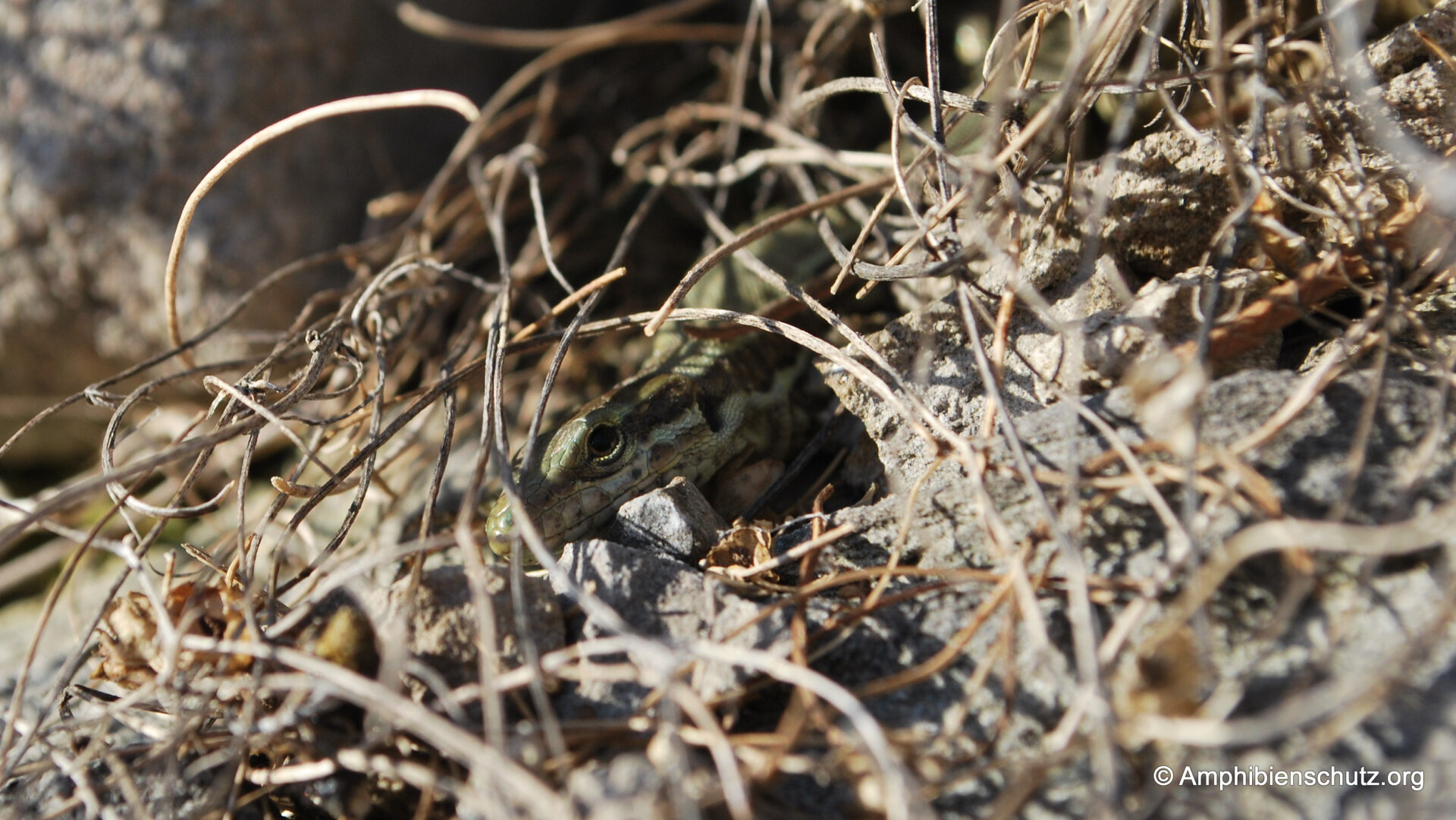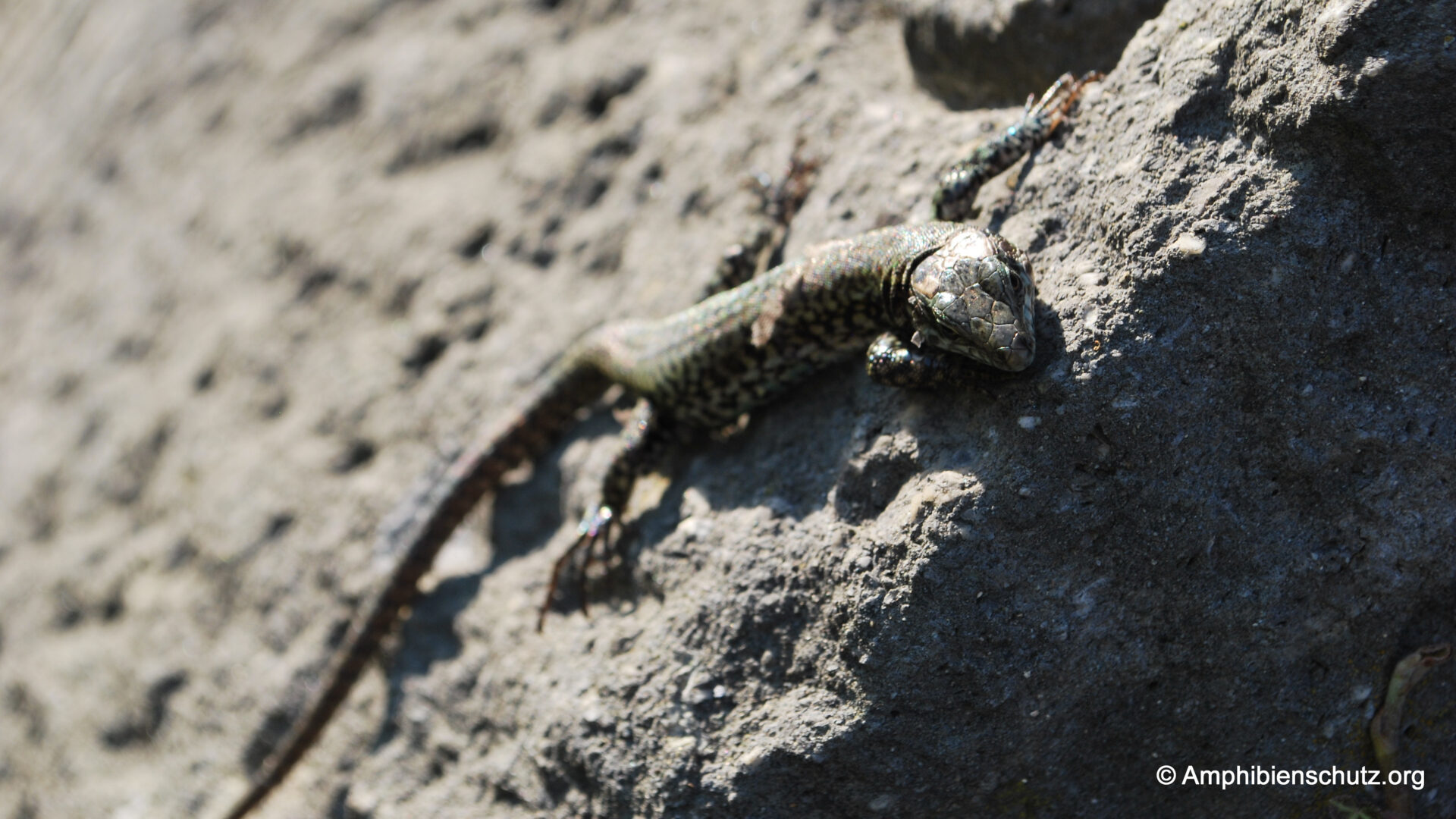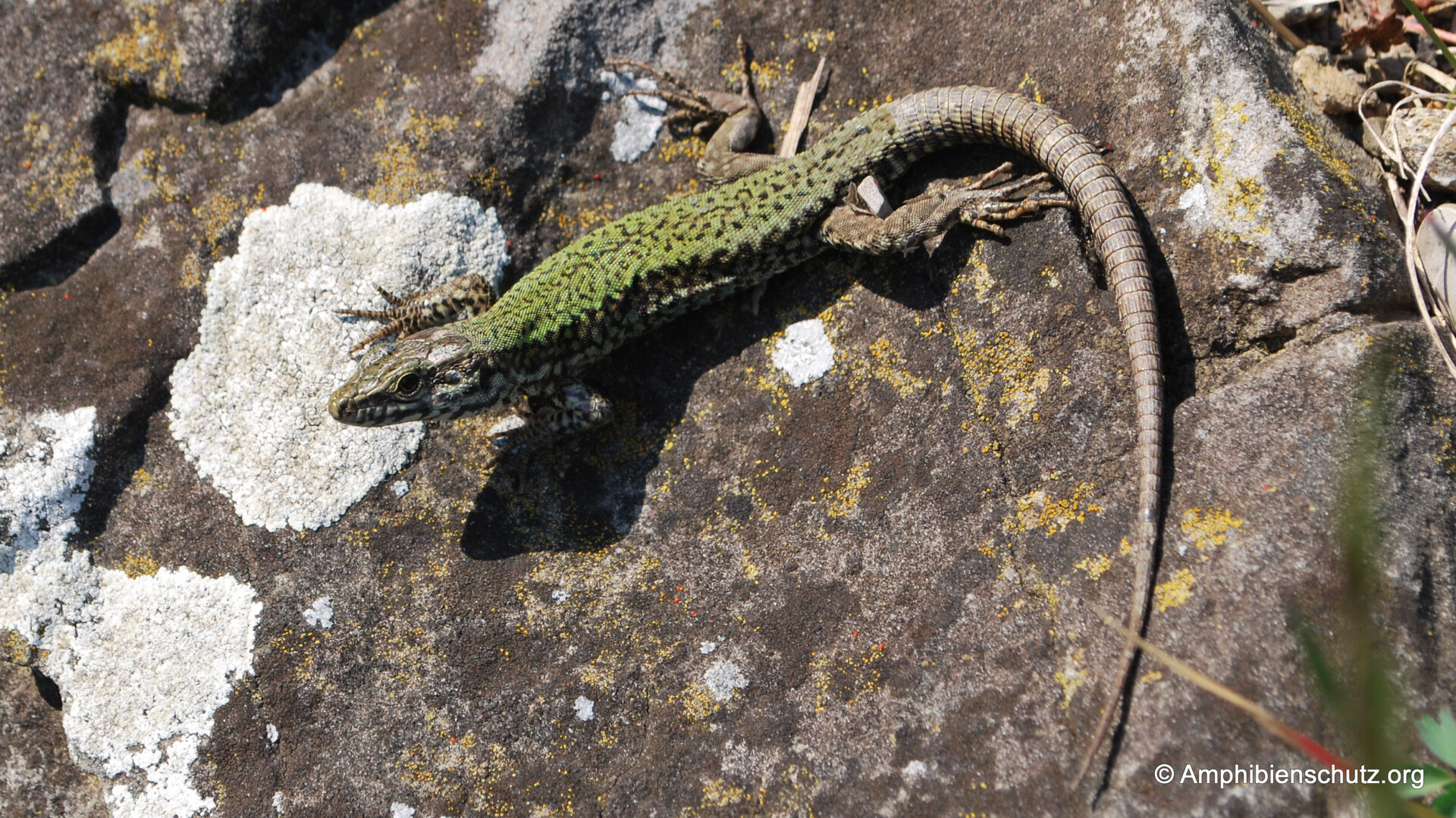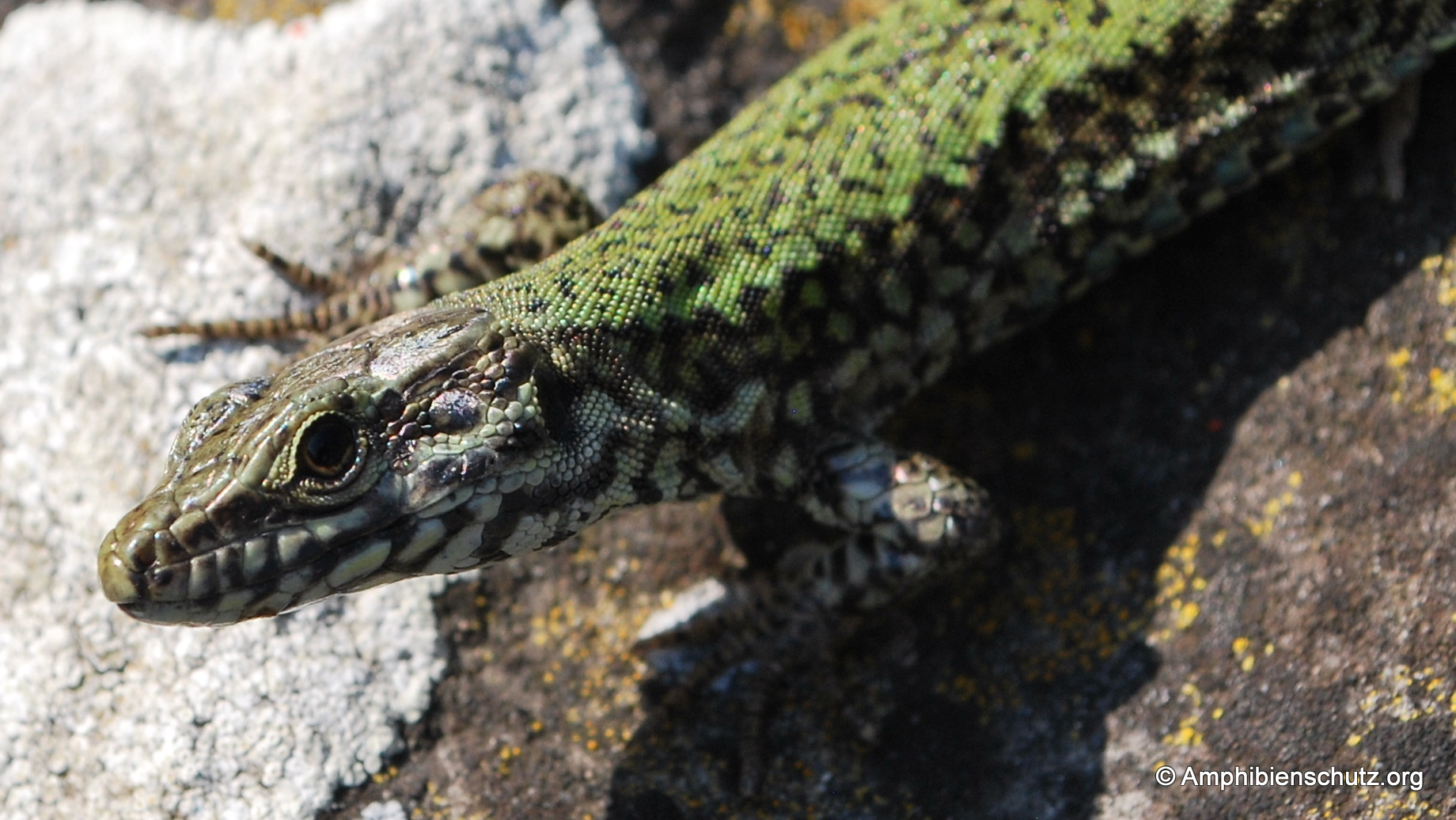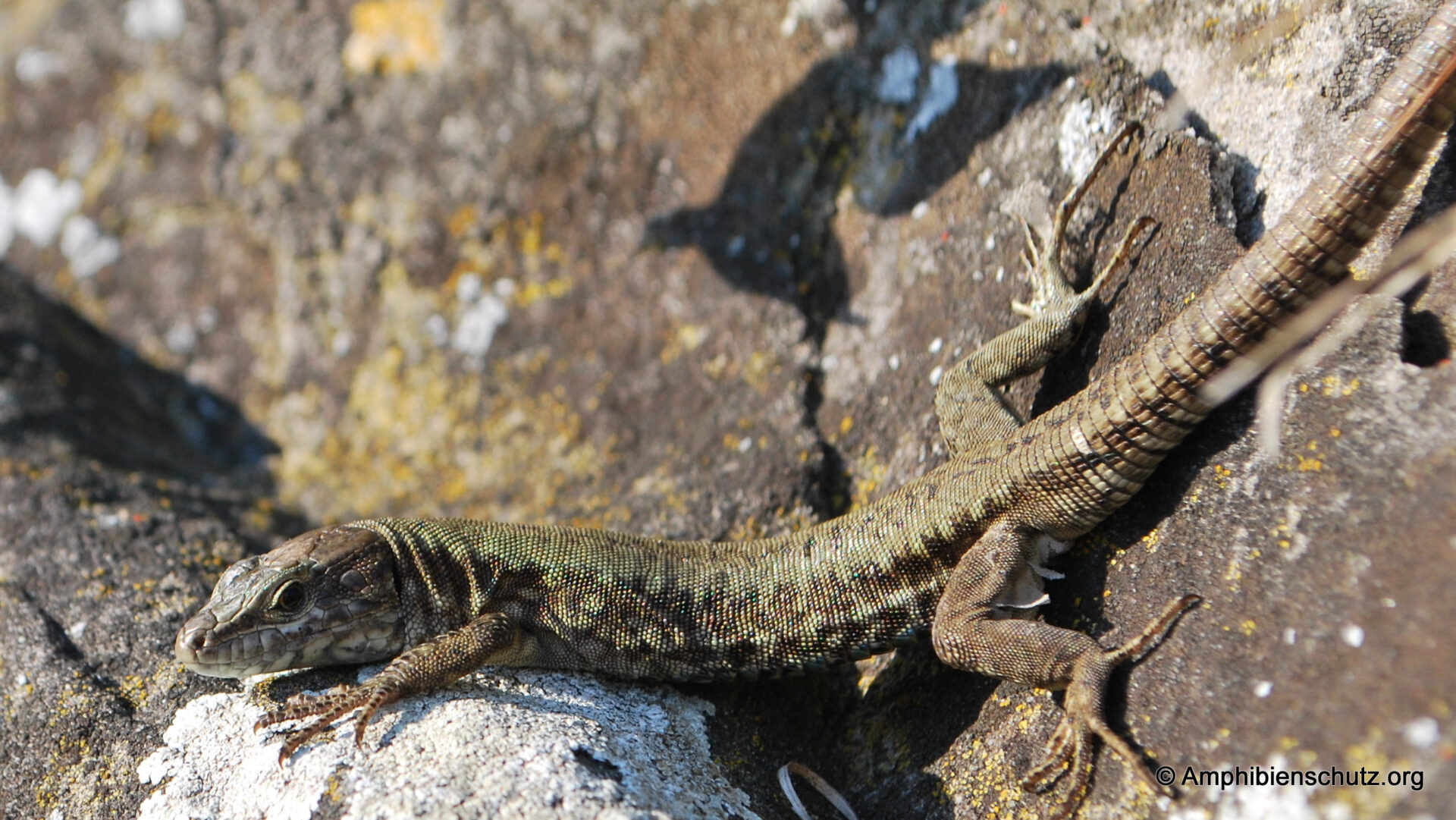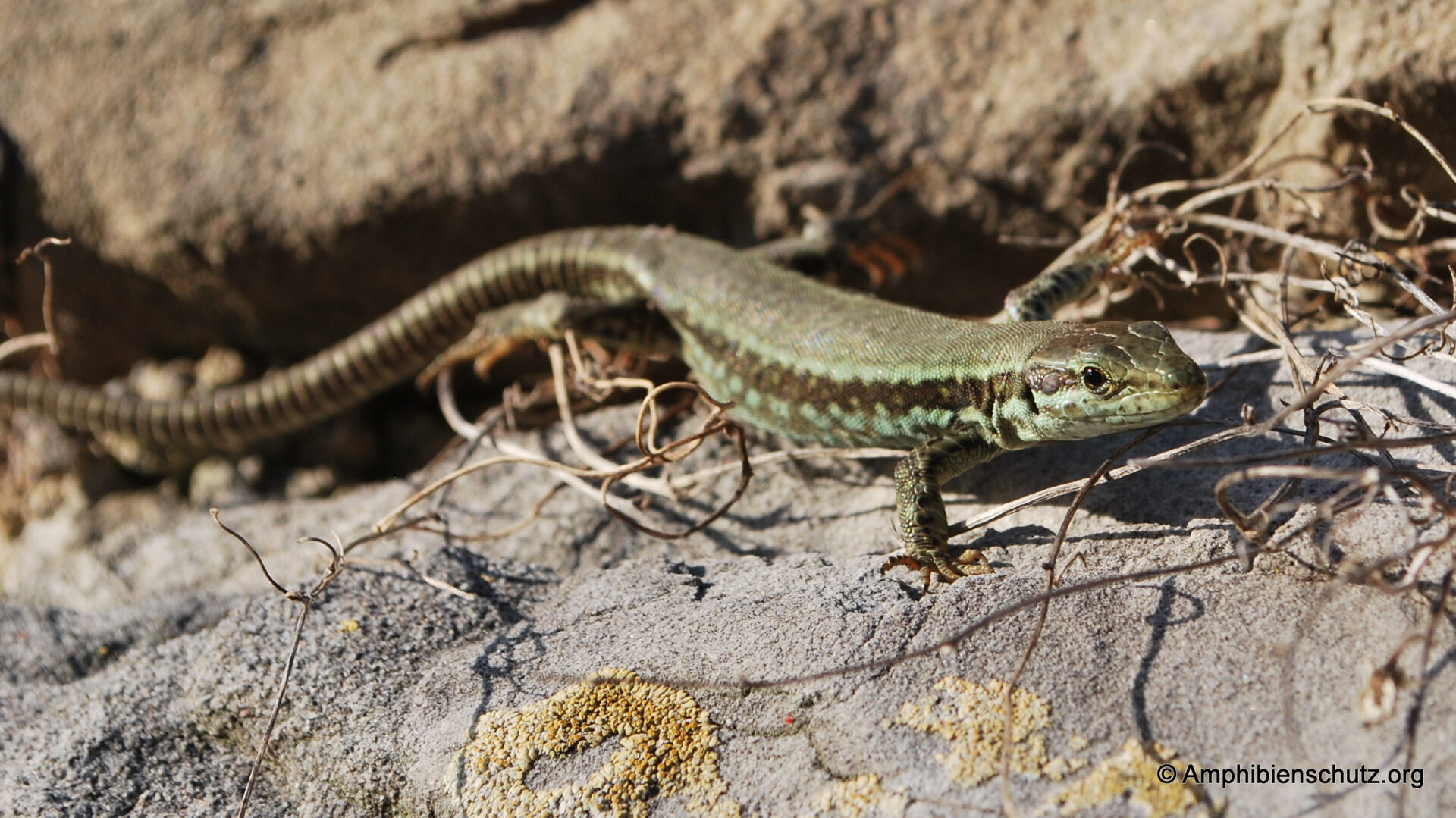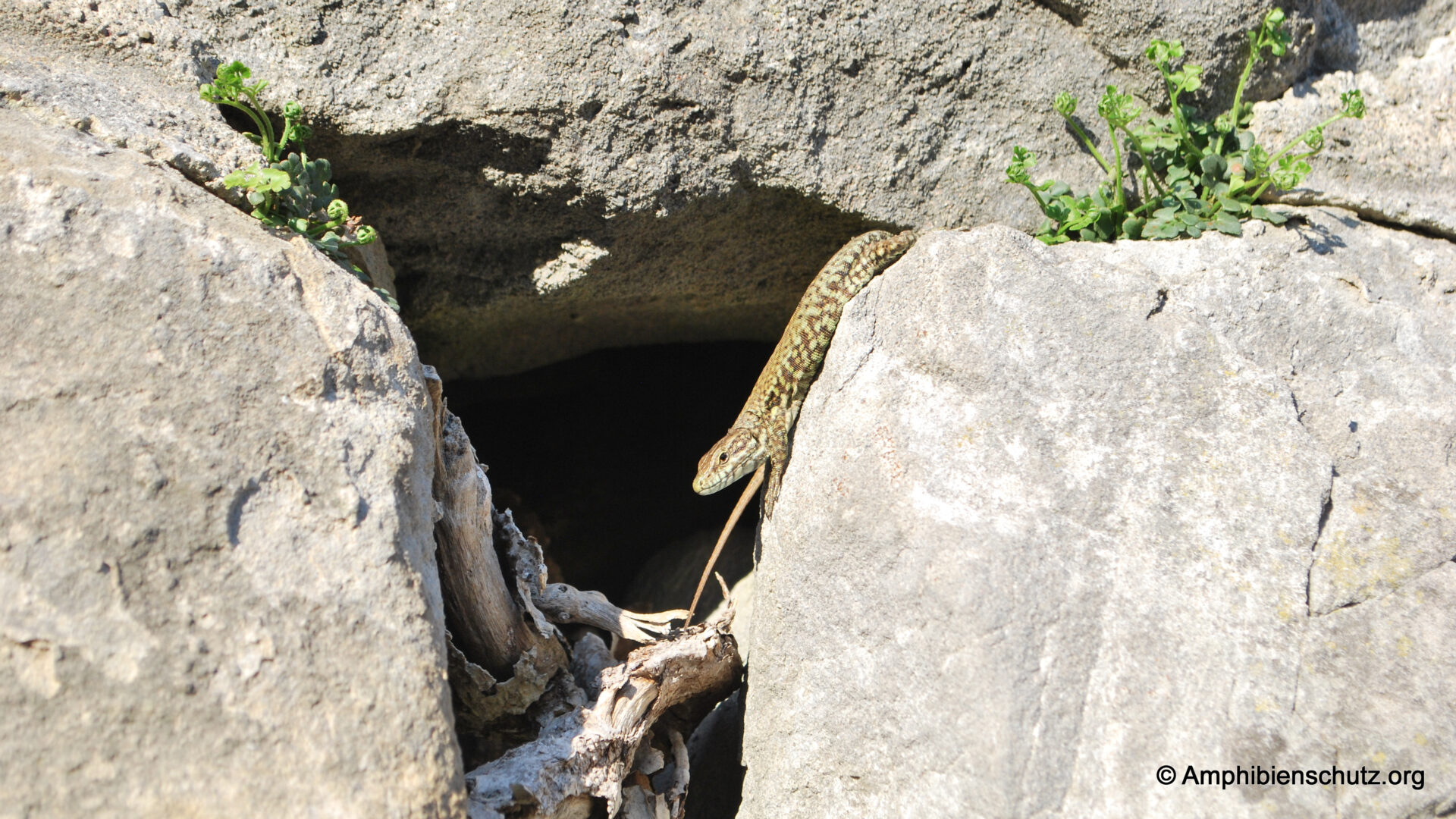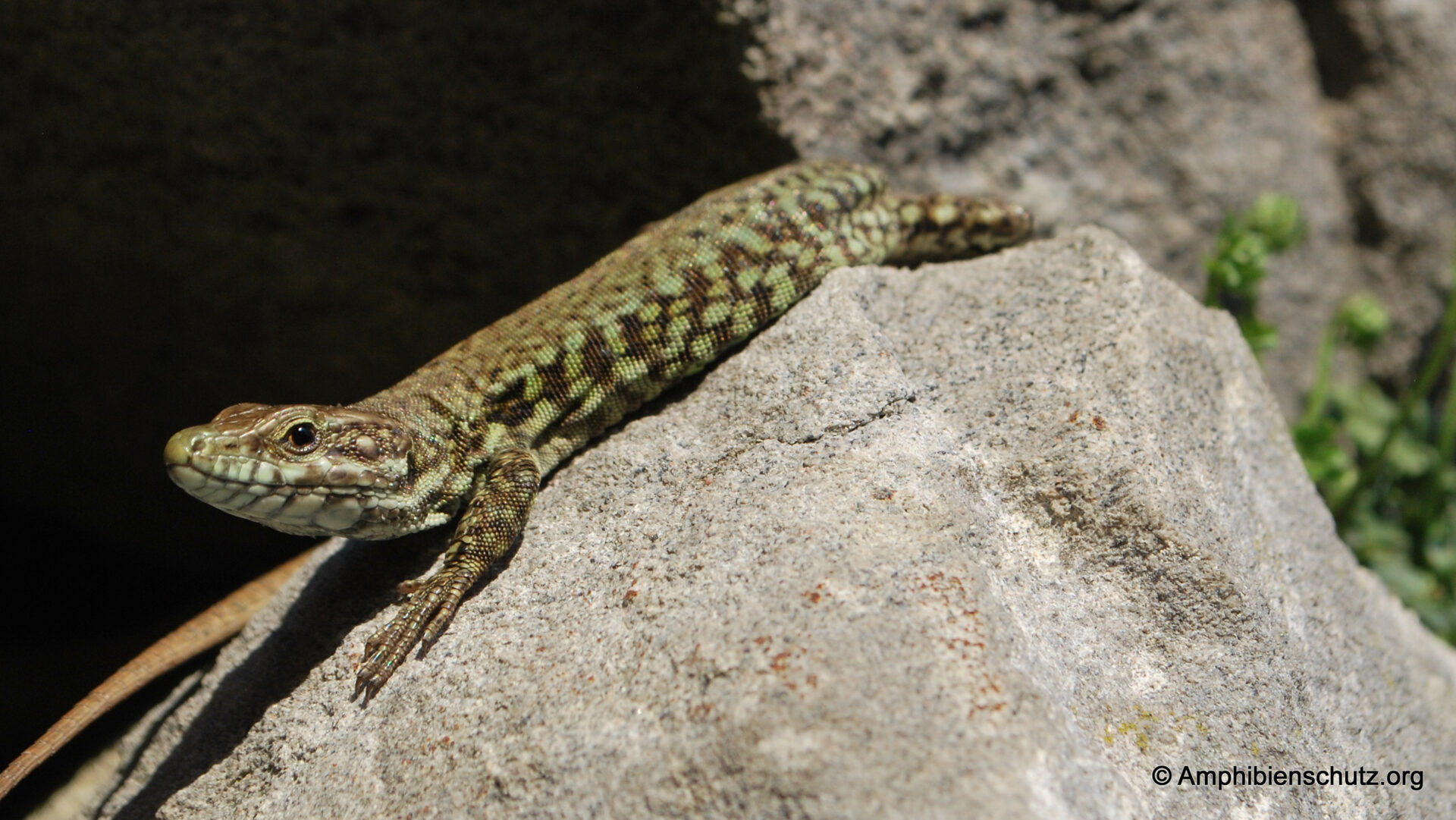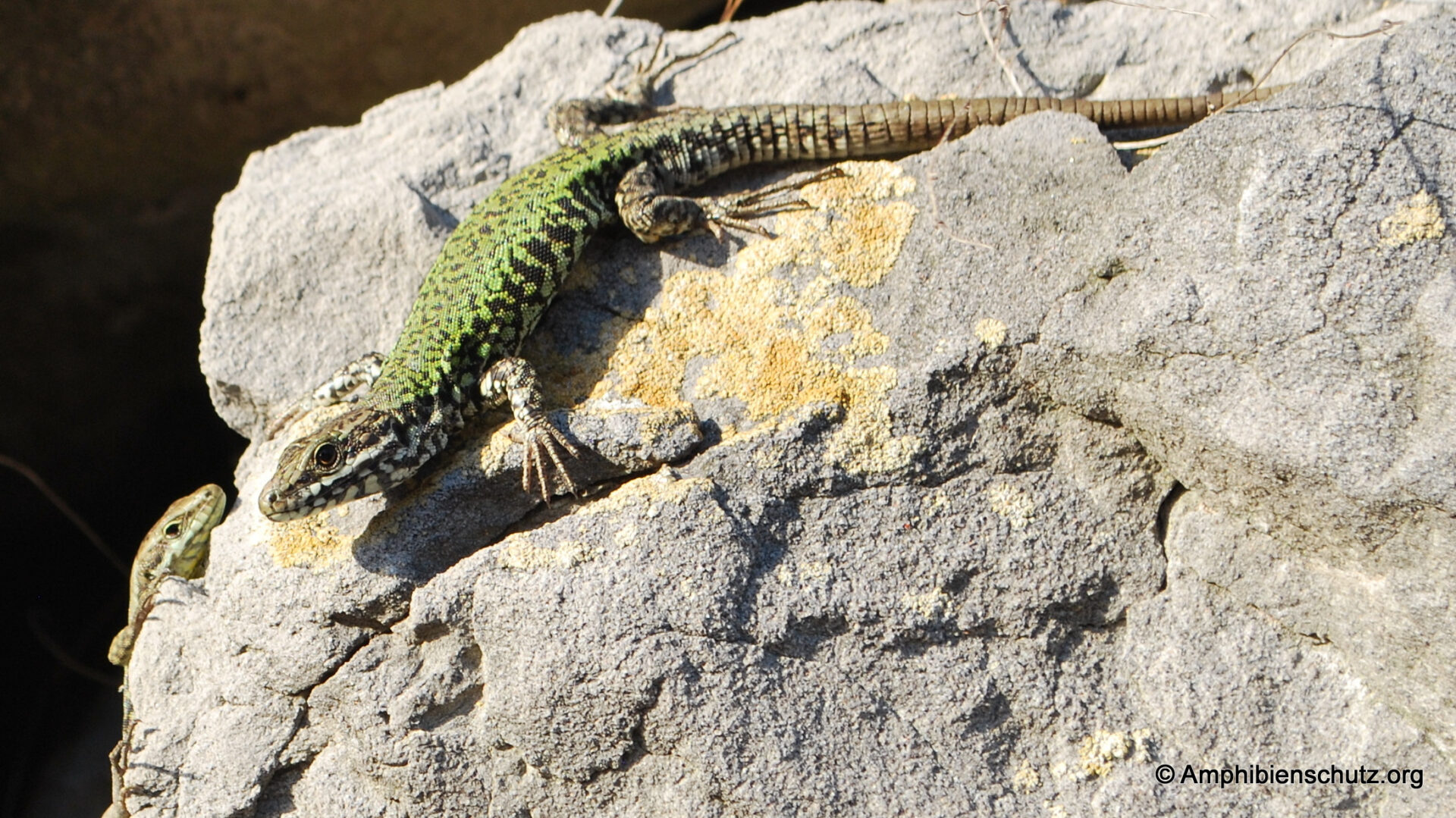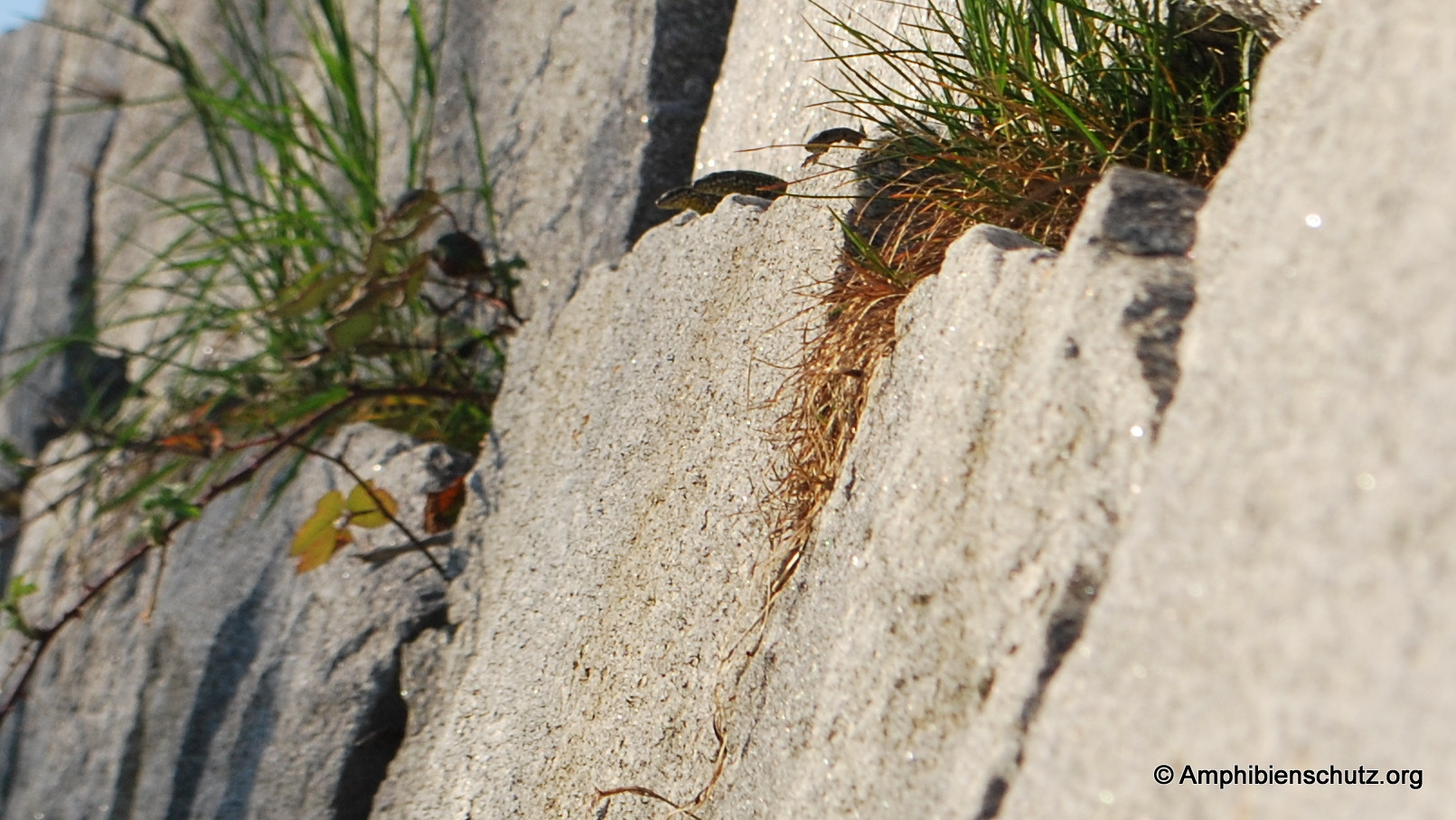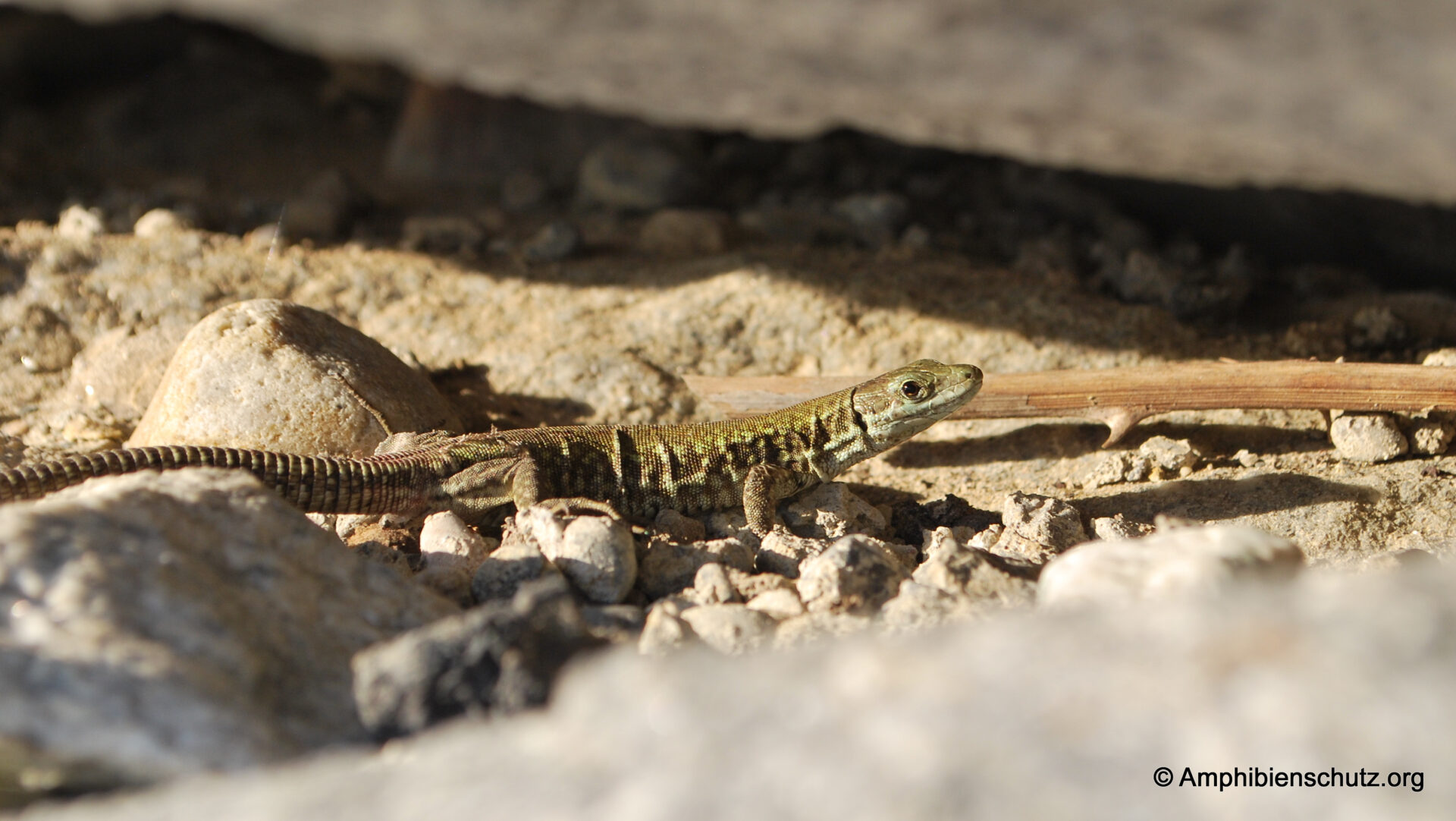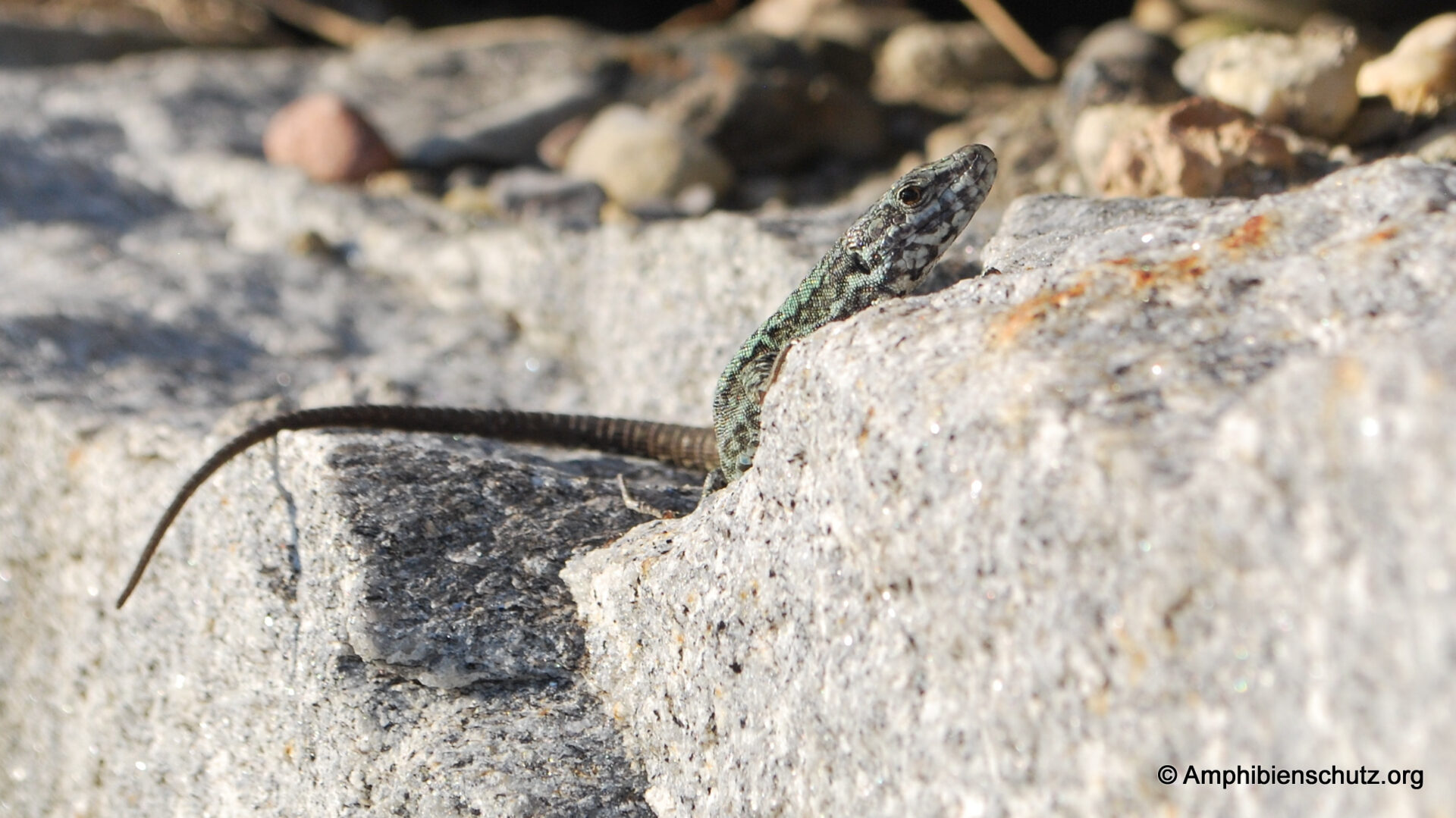Common wall lizard (Podarcis muralis)
The common wall lizard (Podarcis muralis) is a species of lizard with a large distribution in Europe. It can be found from sea level up to 2,500 m asl. In colder regions they are basically found in rocky environments. In warmer regions however they are also found in the soil without rocks. There are at least 11 subspecies of the common wall lizard. Certain southern subspecies have been introduced to Switzerland, where they are mostly found along railway lines. It is believed that they traveled north by freight trains from the southern side of the Alps. The green and other specimens here next to Feldmeilen (Zürich, Switzerland) probably come from an Italian population (compare photo album below). Females have a smaller head and a more obviously striped pattern than males. Common wall lizards grow to about 20 cm (8 ins) in length, the tail is about two thirds of it. During spring and summer the female produces up to three clutches of 2-10 eggs. In warmer years more clutches are produced. Snails, worms, insects and spiders serve as food.
Settlement in North America
The wall lizard is also found in North America. In the USA the common wall lizard has been introduced around 1950. It continues to expand its distribution range annually, and has established itself “so well” in southwest Ohio, it is now considered a native species by the Ohio Department of Natural Resources and is protected under state law. It was also introduced to Vancouver Island and British Columbia (Canada) in 1970.
